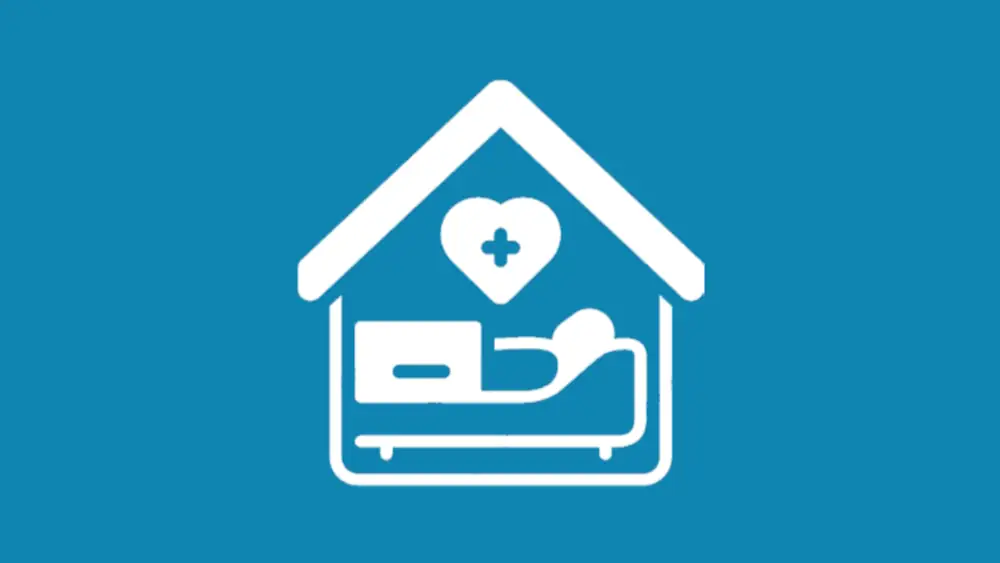Protect Patient Dignity at End of Life

AMGA Goal
Safeguard the dignity and wishes of patients by facilitating open conversations about desired end-of-life medical care and goals and by ensuring benefit designs and models of care enable patients to receive this care in a manner respecting their wishes.
AMGA values the importance of respecting patient wishes as they approach death. To respect the dignity and needs of patients nearing the end of life, AMGA recommends Congress take a holistic approach to improving end-of-life care for Americans by enhancing and improving Medicare coverage for end-of-life care, supporting education and outreach efforts for patients and their families, and engaging with the non-healthcare community to support patients in their communities at the end of life.
End-of-life care encompasses both palliative care, which alleviates suffering for patients undergoing treatment, and hospice care, which focuses on providing comfort for those facing terminal illnesses. Distinguishing between palliative care and hospice care is essential. Palliative care focuses on alleviating suffering and improving the quality of life for patients undergoing treatment for serious illnesses, regardless of their prognosis. Palliative care often is provided alongside curative treatments and addresses symptoms like pain, nausea, and fatigue across various stages of illness. In contrast, hospice care is specifically designed for terminally ill patients who are nearing the end of life and forgo curative treatments in favor of quality of life. The primary aim of hospice care is to provide comfort and to support patients and their families through an approach that addresses physical, emotional, and spiritual care. Both forms of care prioritize comfort but serve patients at different stages, with hospice care reserved for those nearing life’s end.
Understanding and distinguishing these forms of care is vital for improving patient experiences and outcomes. End-of-life care involves providing medical, emotional, and supportive services to individuals nearing life’s end, aiming to enhance their quality of life and uphold their dignity.
The current landscape of end-of-life care is influenced by Medicare Hospice Benefit’s per diem reimbursement and six-month prognosis criteria, which is based on hospice’s traditional focus on cancer patients. This focus, however, is shifting due to changing patient demographics, as hospice patients are increasingly diagnosed with non-cancer conditions.
AMGA recommends Congress:
Establish a Total-Cost-of-Care Model for End-of-Life Care
Develop a comprehensive framework that encompasses all aspects of care delivery and reimbursement to address the holistic needs of patients.
The integration of end-of-life care into high-value care models has emerged as a vital component in the effort to transform healthcare systems, ensuring that patients receive compassionate and respectful care during their final days. AMGA supports this initiative by advocating for policies that prioritize patient-centered approaches to end-of-life care. This integration honors the dignity and wishes of individuals, while addressing the distinct needs of an aging population.
Incorporating end-of-life care within high-value care models not only meets patients’ emotional and physical needs but also supports health system efficiency. By encouraging open discussions among providers, patients, and families, patients are empowered to make informed choices that align with their preferences. Benefits of prioritizing end-of-life care within high-value care frameworks include increased patient satisfaction, better resource management, and lower costs associated with hospitalizations and aggressive interventions. Further, palliative care improves quality of life for patients and their families, while also avoiding unnecessary care.1 Congress has previously considered the importance of such advanced care planning, and AMGA strongly encourages Congress to build on its previous work.2
Integrating end-of-life care within high-value care frameworks presents challenges. Many providers lack necessary training to engage in meaningful conversations about patients’ goals and preferences. Additionally, existing reimbursement models often fail to address the complexities of end-of-life care, which can lead to misaligned priorities in care delivery. To address these challenges, AMGA urges Congress and stakeholders to develop and adopt comprehensive policies that embed end-of-life care principles into high-value care models, ensuring that all patients receive the care they desire and deserve.
The shift in patient demographics presents an opportunity to reassess and modernize current models to better address complex, varied needs through expanded palliative care access, earlier intervention, and high-value care models. Partnerships between hospice providers and Accountable Care Organizations (ACOs) could further enhance care coordination, align financial incentives with patient-centered goals, and improve outcomes.
To advance this effort, AMGA recommends the Centers for Medicare & Medicaid Services (CMS) develop a total-cost-of-care model that goes beyond traditional payment structures and directly reimburses providers for engaging in meaningful conversations with patients and their families. These discussions would help facilitate informed decisions about palliative care options and hospice enrollment, ensuring that care aligns with patients’ values and preferences. A total-cost-of-care model should represent a holistic framework that integrates all aspects of care delivery, quality measures, and reimbursement strategies to address the complex needs of end-of-life patients as comprehensively as possible. Such a model could build on the Medicare Care Choices Model, which found “some terminally ill Medicare beneficiaries will accept supportive and palliative care services if they do not have to forgo payment for the treatment of their terminal conditions.”3
Engage Community and Non-Healthcare Stakeholders
Support partnerships with community organizations to foster collaborative discussions that broaden support for end-of-life care. Engaging various stakeholders promotes a more inclusive dialogue around patient preferences and needs.
Congress and CMS should engage community organizations, faith-based groups, and other non-healthcare stakeholders to foster a more comprehensive and culturally sensitive approach. Community organizations are often trusted entities and can serve as effective liaisons for educating individuals about palliative care options and advanced care planning. Congress and CMS can expand awareness campaigns that resonate with diverse populations by providing grants and partnerships to these organizations. Faith-based groups, for example, can play a crucial role in addressing cultural and spiritual concerns related to end-of-life decision-making, helping families navigate these complex conversations with a foundation of trust.
Non-healthcare stakeholders, such as legal aid services, can also contribute to end-of-life care improvements by addressing ancillary needs that affect quality of life. For example, legal organizations can assist individuals in creating advance directives or wills, ensuring their healthcare preferences are honored. Businesses can offer employee education programs on caregiving and bereavement support, fostering a culture of understanding around end-of-life issues. By creating collaborative networks that incorporate these diverse stakeholders, Congress and CMS can broaden the scope of end-of-life care beyond traditional healthcare settings, ensuring that patients and their families receive holistic and community-centered support.
Implement Outreach and Education Programs
Launch initiatives involving healthcare providers, community leaders, and advocates to create a supportive environment for end-of-life care discussions. These programs empower patients and families to make informed decisions about care options.
Congress and CMS can significantly improve the quality and accessibility of end-of-life care by implementing comprehensive outreach and education programs that empower patients, families, and healthcare providers to make informed decisions. These programs should aim to raise awareness about the importance of advance care planning, including tools such as living wills, healthcare proxies, and documented care preferences. Such initiatives could include public education campaigns to normalize conversations about end-of-life care, addressing cultural stigmas and fostering an understanding of hospice and palliative care services.
For healthcare providers, CMS should fund and support training programs designed to enhance communication skills, ensuring clinicians feel confident and equipped to engage in sensitive discussions about prognosis, treatment options, and patient values. Education efforts should support shared decision making and explain the efficacy of treatment options and how futile efforts negatively affect quality of life. Outreach efforts should leverage technology, such as telehealth platforms, and community partnerships to deliver resources to diverse populations, particularly in underserved or rural areas. Multilingual materials and culturally tailored content would be critical to ensuring equitable access to these educational opportunities. While there is some federal support for caregivers, it is largely restricted to Medicaid or veterans programs.
Federal support for caregivers also is an economic necessity. The financial and emotional toll on caregivers is substantial, often leading to reduced workforce participation and increased reliance on public assistance. Investing in caregiver support programs can yield significant economic benefits by enabling caregivers to remain in the workforce and reducing their financial strain. Supporting caregivers also helps maintain their health and well-being, potentially reducing healthcare costs associated with hospitalizations and institutional care. As the population ages, the demand for caregiving will only grow, making federal investment in caregiver support both a compassionate choice and a strategic economic decision.
Additionally, Congress should allocate funding to pilot programs that integrate end-of-life care discussions into routine care, such as Annual Wellness Visits, during which clinicians can assess and document care preferences early. By fostering an informed, patient-centered approach, these initiatives can reduce unnecessary interventions, align care with individual values, and ultimately improve patient and family satisfaction, while also alleviating the emotional and financial burdens often associated with end-of-life care.
Expand Medicare Coverage for End-of-Life Care
Adjust fee-for-service models to better account for advanced illness planning and care coordination services. Additionally, build on existing models to include individuals who do not require nursing home-level care, offering broader comprehensive support for those facing serious health challenges.
Expanding Medicare coverage for end-of-life care would ensure patients and families receive comprehensive, compassionate, and equitable support during a critical stage of life. Current Medicare benefits for hospice and palliative care provide valuable services, but often fall short in addressing the full spectrum of patients’ needs, such as earlier access to palliative care and broader coverage for innovative care delivery models. To address these gaps, Congress should amend Medicare policies to include more flexible eligibility criteria for hospice, allowing patients to receive concurrent curative and palliative treatments. This approach, along with improved reimbursement to ensure palliative care and hospice care is appropriately reimbursed, would help align care with patient preferences and reduce the difficult choice between seeking life-prolonging treatments and receiving comfort-focused care. Currently, Medicare reimbursement does not adequately cover the infrastructure, such as triage nurse and transportation services, needed to provide palliative and hospice care. Historically, AMGA members report these services only survive through subsidies from other service lines and community philanthropy.
Additionally, Medicare should expand reimbursement for caregiver support, mental health counseling, and bereavement services to ensure that families have the resources they need. Telehealth should also be fully integrated into end-of-life care coverage, enabling patients in rural or underserved areas to access palliative care specialists without traveling. Furthermore, expanding pilot programs like the Medicare Care Choices Model, which allows patients to receive palliative services alongside standard treatments, could provide valuable insights into sustainable ways to improve care quality while managing costs. Congress and CMS should build on the Program of All-Inclusive Care for the Elderly (PACE) model of care, which provides comprehensive medical, emotional, and supportive services to help seniors remain in their communities. PACE is based on the idea that most older adults prefer to receive care at home rather than in a nursing home.
Currently, Medicare reimburses PACE at a capitated rate for beneficiaries identified by the state as needing nursing home-level care. AMGA recommends CMS expand coverage of the PACE model to allow more individuals access to essential end-of-life care, particularly for patients receiving palliative but nonterminal care. This approach reflects a nuanced understanding of end-of-life needs, allowing comfort-focused care regardless of terminal status. AMGA is also optimistic about the Guiding an Improved Dementia Experience (GUIDE) Model, a voluntary nationwide model test that aims to support people with dementia and their unpaid caregivers.
By broadening Medicare coverage, policymakers can help create a healthcare system that prioritizes dignity, comfort, and patient-centered decision making at the end of life.
“About 15 to 20 years ago, I admitted an elderly gentleman four times to the hospital in a six-month period. After he subsequently died of heart failure, his family approached me and thanked me for taking care of their loved one. Their only regret was the “suddenness” of his passing. I felt very small at the point. Their loved one had been slowly dying from the day we met, as he had heart failure, and the only thing I could do was tweak medications when he had a brat during the Packer’s game. But I failed to prepare them, as I had tunnel vision and was treating symptoms and not the patient. ”
— Paul Pritchard, MD, MBA, Vice President and Chief of Quality, Prevea Clinic
Conclusion
Addressing end-of-life care is fraught with difficulties, but AMGA contends it is a vital aspect of any serious effort to improve Medicare from both a beneficiary coverage and a provider reimbursement standpoint. Many patients nearing the end of life undergo invasive and expensive interventions—such as feeding tubes and dialysis—that often offer little benefit in terms of extending life or enhancing its quality. Although most individuals express a preference to spend their final days at home, many still die in hospitals or nursing facilities after experiencing multiple transitions between care settings. Bereaved family members frequently report shortcomings in end-of-life care, including inadequate pain control for 25% of patients, high rates of emotional distress (56% experienced anxiety or depression), and unmet spiritual needs for more than 40% of decedents.4 Medicare spends roughly 25% of its total budget on patients in their final year of life, with median spending during the last six months exceeding $25,000 in many regions.5 Engaging patients, families, and friends in this journey empowers individuals, providing comfort during life’s final stage. The future of end-of-life care should prioritize patient-centered principles, ensuring compassionate, dignified care. By developing a total-cost-of-care model, engaging diverse stakeholders, expanding education and outreach, and enhancing Medicare coverage, policymakers, providers, and stakeholders can collectively ensure individuals receive the highest quality end-of-life care.

Enhance Patient Engagement
Empower patients to take an active role in their healthcare decisions.

Improve Health Outcomes
Address disparities to ensure all populations receive high-quality care.

Protect Patient Dignity at End of Life
Promote compassionate care that respects patient preferences.

Remove Regulatory and Statutory Barriers
Reduce administrative burdens that impede care delivery.

Support Practices Serving Rural and Underserved Populations
Ensure equitable resources and support for all providers.

Ensure the Long-Term Sustainability of High-Value Care
Establish a payment model that ensures long-term viability for providers.
For more information on the AMGA MACRA and Value-Based Care Task Force Recommendations
1 World Health Organization Fact Sheet on Palliative Care, August 5, 2020
2 “Collins, Warner Introduce Bipartisan, Bicameral Legislation to Expand Access to Advance Care Planning,” Nov. 24, 2022. www.collins. senate.gov/newsroom/collins-warner-introduce-bipartisan-bicameral-legislation-to-expand-access-to-advance-care-planning
3 Medicare Care Choices Model, Fifth and Final Annual Evaluation Report
4 Nicholas LH, Fischer SM, Arbaje AI, Perraillon MC, Jones CD, Polsky D. Medicare-Covered Services Near the End of Life in Medicare Advantage vs Traditional Medicare. JAMA Health Forum. 2024;5(7):e241777. doi:10.1001/jamahealthforum.2024.1777
5 Nicholas LH, Fischer SM, Arbaje AI, Perraillon MC, Jones CD, Polsky D. Medicare-Covered Services Near the End of Life in Medicare Advantage vs Traditional Medicare. JAMA Health Forum. 2024;5(7):e241777. doi:10.1001/jamahealthforum.2024.1777